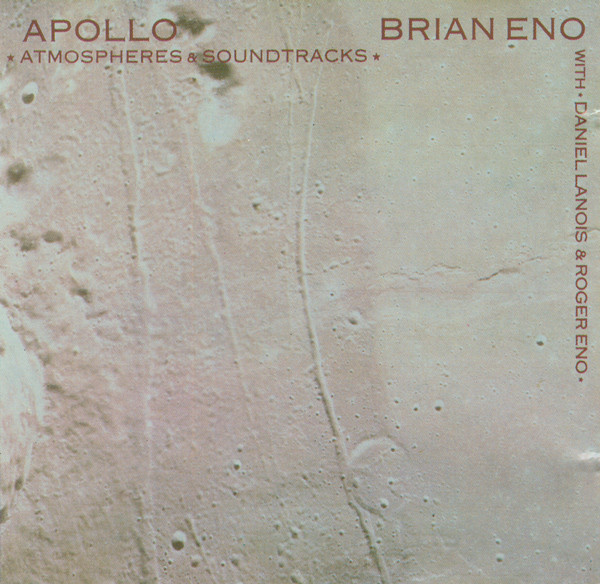Here are eight from 83. Before I begin, a few others that deserve a mention include The Hurting by Tears for Fears, Aztec Camera’s High Land Hard Rain, Yello’s You’ve Got to Say Yes to Another Excess, the Yellow Magic Orchestra’s Naughty Boys, Big Country’s The Crossing, Cabaret Voltaire’s The Crackdown, Bad Brains’ Rock for Light, Head Over Heels by the Cocteau Twins and Soul Mining by The The.

Slated on its release, and a commercial failure, Dazzle Ships has had a long and painful rehabilitation. The problems with it are easy to see. It’s quite short, especially when you take into account the experimental interludes, a few of which could have been fleshed out a bit, or trimmed right down, and the best song, “Romance of the Telescope”, had already been a B side. But it was daring for its time, and despite the overuse of the Fairlight Emulator, it doesn’t sound dated. Some of the bonus tracks added to subsequent reissues such as “4-Neu” and “66 and Fading” would have beefed it up a bit too. Still, with Architecture and Morality it remains the album of theirs I come back to most often.

Despite its blurry nature and complete lack of intelligibility, Murmur is still held up by many as the band’s finest album. It’s easy to see why. It has echoes of sixties jangly guitar bands, but exists in its own world. Perhaps the lack of sharpness is one of the reasons it’s always refreshing to return to compared to some of the bombast of later records. It’s not quite my favourite, though.

Juan Atkins and Rick Davis, a Vietnam veteran ten years his senior may have seemed an odd match, but with Enter they threw down the marker. This is undoubtedly the first Detroit techno album, even if it has a lot of electro influences about it. Its clean lines and skittish percussion point to a robotic future peopled by the likes of ‘Mad’ Mike Banks, Carl Craig, and the Belleville Three. New York was more of a party town, and Planet Patrol’s only album reflects this. Producer legends Arthur Baker and John Robie backed a quartet of vocalists, and the six tunes are eminently singable, as well as feet friendly. Electro was not a long lasting genre, and not one that left a lot of great albums. This is probably as near as it got.

Movement was a bit of a false start for New Order. The band were hesitant, and Martin Hannet’s production covered everything with a sonic fog that made everything sound the same. Eighteen months later, the first bar of “Age of Consent” tells you that everything has changed. Track seven, “Ecstasy”, may be one clue as to how. This was New Order fusing their post-punk background with New York electro. Not always successfully (“586”), but in places beautifully (the majestic “Your Silent Face”). And “Leave Me Alone” showed they could still do jangly pop full of pathos. It was typical (and refreshing) that the record had no place for “Blue Monday”, a huge worldwide hit issued just a couple of months earlier.

Eno’s moon project with his brother Roger and Daniel Lanois has a lot of eighties funky bass, echoes of country music, and a few hangovers from his project with David Byrne. Some of it does sound a little dated. At its best, though, it hangs in some kind of cosmic eternity. “Ascent (An Ending)” is a piece that should be familiar to everybody, even if they have no idea that they know it. It hangs in weightlessness, and could feasibly go on forever. I wrote about it back in 2007.

Uncut magazine recently issued a top 500 albums of the eighties special. Much of it was predictable, some refreshingly surprising, some a bit ‘really?’ (Felt have to be the most overrated band of the decade by a country mile). You’d think how influential they were on the guitar bands that came after there would have been room for the Chameleons, but no. It seems Middleton’s best kept secret remains under wraps. Script of the Bridge was the band’s first and finest album. Recordings for Epic from 1981 (a contract that resulted in just one single) and demos have all been issued to give an idea how they got here. From “Don’t Fall” to “View from a Hill” it is the perfect indie rock album. There’s not a song that doesn’t belong there. Some of it is quite dark, some mesmerisingly epic (“Second Skin”). A wonderful album by a truly great band.

Wheezy pump organ, junkyard percussion, a selection of songs that seem to have been gathering dust in an antique emporium since Edwardian times. The reinvention of Tom Waits from bar room balladeer began here. Compared to Rain Dogs and Frank’s Wild Years, it’s a gentle introduction to this carnivalesque world. Underneath the dust and rust, there are always gems of songs awaiting discovery. He can’t help himself. “Johnsburg, Illinois” is a breathtakingly beautiful ninety seconds, but is by no means alone here.




















